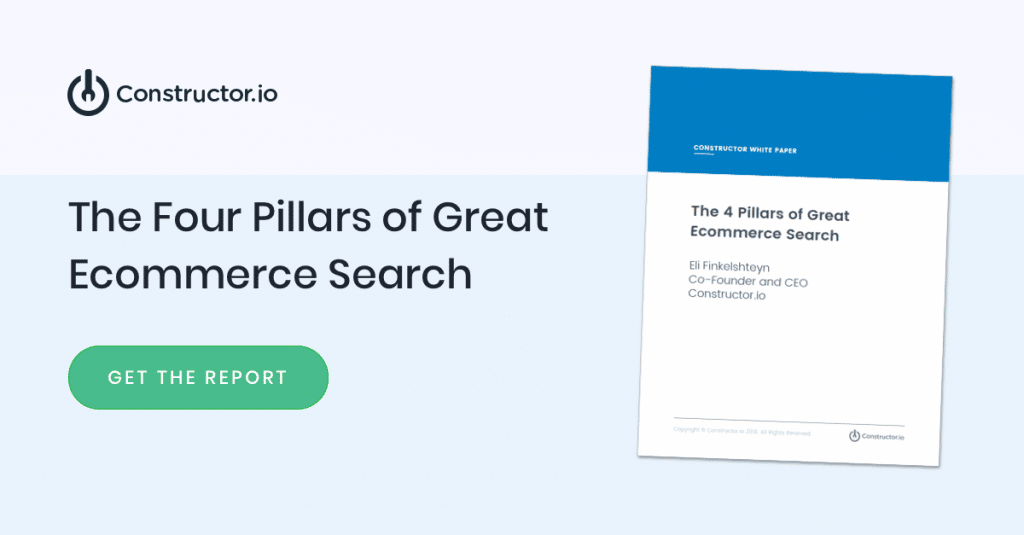Where voice commerce is at, where it’s headed and what to know before you dive in
Voice-powered search is quickly going from science fiction to science fact. By next year, Technavio is reporting that the voice recognition market will top over $600 million dollars. And hot on the heels of that report comes comScore’s prediction that 50% of all searches will be voice-activated by 2020.
We’re all familiar with the ease of use and convenience of asking Siri, Alexa, Cortana and Bixby to simplify our busy lives. But how well does that capability translate to browsing and online shopping?
Despite all of the advances we’ve made in voice recognition and the proliferation of voice-enabled search in our devices, the technology is still very much in its infancy. And like many of the technological hurdles we’ve faced up to this point, we have to learn to crawl before we can walk. Still, we’re excited by the possibilities available today, and even more enthralled by what will be possible in the future.
Exploring voice commerce possibilities and opportunities
Even an ecommerce company as large and as far-reaching as Amazon is still exploring all of the possibilities of voice-driven search for ecommerce.
In fact, Amazon founder Jeff Bezos himself admitted that the Alexa voice interface isn’t really effective for shopping today.
He elaborates, “[f]or sure, if you have a 2-year-old and you see that you’re running low on diapers, we want to make that easy for you. But voice interface is only going to take you so far on shopping…Alexa is primarily about identifying tasks in the household that would be improved by voice. Music is one. Another is home automation.”
That may sound short-sighted on Amazon’s part. But when you look a little deeper at the search part of voice-activated search, you’ll see where the real challenge lies.
Building the foundation with a site search that learns and improves
Just as the transition to an internet-enabled home started with a desktop computer, a modem and a CD with “free internet hours” to scour the World Wide Web, so too will ecommerce’s adoption of voice search begin with a few small steps.
Google Chrome already includes a refreshingly accurate voice-to-text API and Mozilla Firefox is close to releasing theirs. And although crafty developers can create powerful demos today, the ability to create a flawless customer experience is still a work-in-progress.
Just watch this example to see how easy it is:
Voice Commerce Demo with Constructor Search
And these kinds of results are already starting to appear in the online storefronts of many well-known brands.
The best results from a voice-powered ecommerce search are going to come about as a result of the most user-friendly, most accurate, most robust site search engine. Much as an ordinary website is only as good as the code behind it, so too will voice-powered shopping be only as good as the underlying search that powers it.
“The foundation APIs are all available today and getting better every month: voice to text, voice authentication, natural language processing, intelligent search…” states Constructor co-founder Dan McCormick. “We are excited to work with savvy merchants to transform these developer interfaces into compelling voice commerce experiences.”
Today’s text is tomorrow’s voice
Building a compelling voice commerce experience requires improving the shopping experience itself while adding voice features.
Site search is becoming smarter and is using features like NLP or natural language processing to conduct searches based on how we speak, and not forcing us to try and communicate in odd algorithms that only computers can understand.
Text-based site search is also learning, using things like artificial intelligence and personalization to build a profile of a user’s overall search habits, and then recommend items based on the precise profile it has built of them.
Text and voice commerce are joined at the hip. Improve one and you improve both.
Start with a site search engine that is able to learn and grow as your company grows, creating a scalable framework from which to create these engaging user profiles, follow natural language commands and much more.
Then, when voice-activated search has grown and evolved, you’ll be ready to capture a hungry market with a search engine that understands how your users search…and speak.
Want to learn more about optimizing e-commerce on-site search?
Site search users convert at twice the rate of other shoppers. So how can you improve shoppers’ experiences with your e-commerce search engine?
Learn more in this new report from Constructor.io’s co-founder and CEO, Eli Finkelshteyn:


